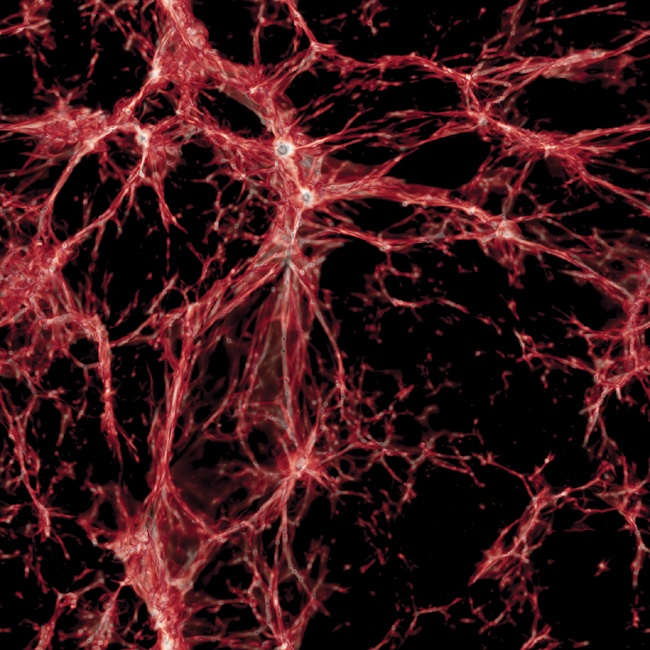Chapter 7. Design Takes on New Dimensions: Evolving Visualization Approaches for Neuroscience and Cosmology
HUNTER WHITNEY
The Brain Is Wider Than the Sky
The Brain—is wider than the Sky—
For—put them side by side—
The one the other will contain
With ease—and You—beside—
—EMILY DICKINSON, FROM THE BRAIN IS WIDER THAN THE SKY
The ability to perceive and understand the words you’re currently reading is made possible by signals flowing across synaptic junctions in your brain. In total, you have about 100 trillion of these synapses—a figure that exceeds all of the stars in the Milky Way galaxy. For most of us, that’s just an interesting statistic; for neuroscientists and cosmologists, those kinds of numbers are a part of their work environment. Both fields share other commonalities, as well. Whether it’s the activity patterns among nerve cells or the interactions of stars and black holes, both disciplines explore physical objects and systems that don’t easily lend themselves to direct observation and experimentation. Increasingly, interactive visualizations[113] such as that shown in Figure 7-1 can help people involved in these areas explore, analyze, and test the unimaginable.

Within the past few years, emerging technologies are starting ...
Get Designing for Emerging Technologies now with the O’Reilly learning platform.
O’Reilly members experience books, live events, courses curated by job role, and more from O’Reilly and nearly 200 top publishers.

